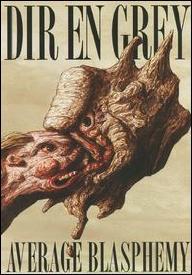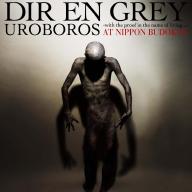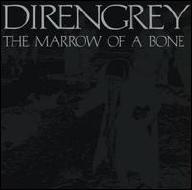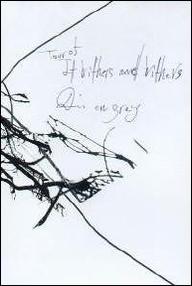Dir en Grey were formed in February 1997 from the line-up of disbanded indie rockers La:Sadie's -- Karou, lead guitar, backing vocals; lead vocalist and lyricist Kyo; rhythm guitarist and backing vocalist Die; drummer Shinya -- with bassist Toshiya. Their name translates literally as "grey silver coin" but was meant to signify the band's chosen musical terrain: the amorphous, indefinable area between genres.
A few months after forming, they issued the Missa EP. It attracted mainstream attention and entered Oricon music charts in the Top Ten. The band began touring Japan with an intensely visual show and attracted national attention. After five subsequent singles produced by X Japan co-founder Yoshiki Hayashi appeared during the first half of 1999 and charted, Dir en Grey issued the long-player Gauze in 2000; it contained all the singles and more and registered inside the Top Three on the Oricon charts, netting Dir en Grey a record deal with the Sony-distributed Firewall Div. for Macabre, their second long-player that year. Initial critical impressions signaled a slight shift away from their visual kei roots by featuring an industrialized sound with screaming vocals. Following their first foreign tours in China, Taiwan, and South Korea, another LP, 2002's Kisou, went to number three on Japanese charts.
Dir en Grey opted for more change: their 2002 EP Six Ugly drew heavily on Western metal influences, which upset some members of their original fan base. Still, the band persisted, exploring the metalcore sound and a darker side of human life on both 2003's Vulgar and 2005's Withering to Death, which went to six and eight, respectively, on the Japanese music industry charts, signaling that the band had gained a more diverse audience. Those releases proved their worth as Dir en Grey began gaining recognition in the Western hemisphere.
In 2005 they charted in Europe for the first time. Withering to Death reached number 31 in Finland (their single "Clever Sleazoid" would later peak at number 15). They debuted in Berlin and Paris, and later played the German festivals Rock am Ring and Rock im Park. Withering to Death was released in Europe in November 2005, and in America in March 2006, preceding Dir en Grey's widely acclaimed U.S. tour. Soon after completing it, Kyo was hospitalized for strained vocal cords. He recovered in time for the band's rotation on Korn's Family Values Tour.
The Marrow of a Bone was simultaneously released in Japan, Europe, and North America in 2007. It peaked at number seven on the Japanese charts, and Dir en Grey promoted it by touring the U.S. and opening for Deftones. They further infiltrated Europe, debuting in Denmark, Finland, Poland, Sweden, the U.K., the Netherlands, and Switzerland. Not forgetting their core audience, Dir en Grey eventually toured Japan, delivering a two-night show with Linkin Park and a stint at the Hide memorial concert with X Japan and Luna Sea, among others.
The fall of 2008 saw the release of seventh album Uroboros in Japan, Europe, and America, followed by U.S./Canadian tours in November and December. In 2009 the band released two live concert DVDs (A Knot Of and Tour 08: The Rose Trims Again) and the video-compilation DVD Average Blasphemy. In 2010, Dir en Grey co-headlined a North American tour with Apocalyptica, headlined their own tour of Europe, and shared festival stages with the Stooges, the Cult, Korn, and numerous other bands. In January of 2011, the band issued the single "Lotus," followed in June by "Different Sense." Both tracks were included on the August 2011 full-length Dum Spiro Spero, released in Europe, America, and Japan. On August 1, Dir en Grey released an open letter on their official Facebook page, accusing the Japanese government of lying to its people and hiding the true danger of the radiation levels after the nuclear accidents caused by the 2011 Tohoku earthquake and tsunami. In October, the band launched a campaign called "Scream for the Truth," complete with a website and a billboard hanging in New York City's Times Square, in hopes of curbing misinformation and making correct statistics available.
In February 2012, vocalist Kyo was diagnosed with vocal nodule dysphonia. Dir en Grey pulled out of the North American "Still Restless" package tour with Asking Alexandria, Trivium, Motionless in White, and I See Stars. Kyo's third hospitalization was followed by surgery and an extended recovery period.
In 2013, they released The Unraveling, an EP of re-recorded material. Following its release, Kyo formed the visual kei side project Sukekiyo, who released the album Immortalis in early 2014. Dir en Grey returned with a new single, "Sustain the Untruth," and their ninth studio album, Arche, in December. The album, widely considered their crowning achievement, offered a progressive tinge for the first time. Though released in Europe in early 2015, it did not receive a North American release. It did, however, chart in Germany, Finland, England, and Switzerland as well as claiming a Top Three spot in Japan.
Kyo's Sukekiyo released the Vitium EP in 2015, while guitarist Die launched a more pop-oriented side project, Decays, in 2016 with the album Baby Who Wanders. That year also saw the release of another new Dir en Grey single, "Utafumi." Sukekiyo's sophomore album, the highly acclaimed Adoratio, was released in 2017. In April 2018, Dir en Grey issued a new single, "Ningen wo Kaburu." It appeared, along with "Utafumi," on their tenth album, The Insulated World, which was released that September and saw the band combining heavy styles from across its career, to mixed reviews. They toured Japan through most of 2019, and followed in North America that December. They undertook a European tour during the first two months of 2020 before the COVID-19 pandemic hit.
Dir en Grey didn't return to the studio until late in 2021. They recorded a slew of new material. In June 2022 they issued the 11-song Phalaris. Musically adventurous, it veered even closer to prog and prog metal as the mix framed Kyo's completely recovered voice in knotty, labyrinthine songs that mostly eschewed metal riffs in favor of key, tempo, dynamic, and even genre changes. It placed Top Five in Japan out of the gates, and won over critics internationally. ~ Alexey Eremenko & Thom Jurek, Rovi


















